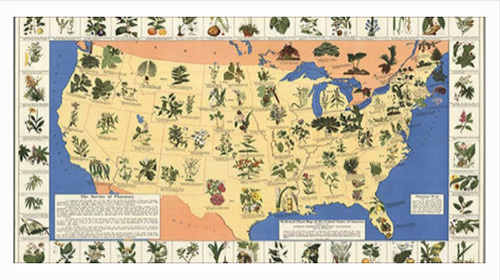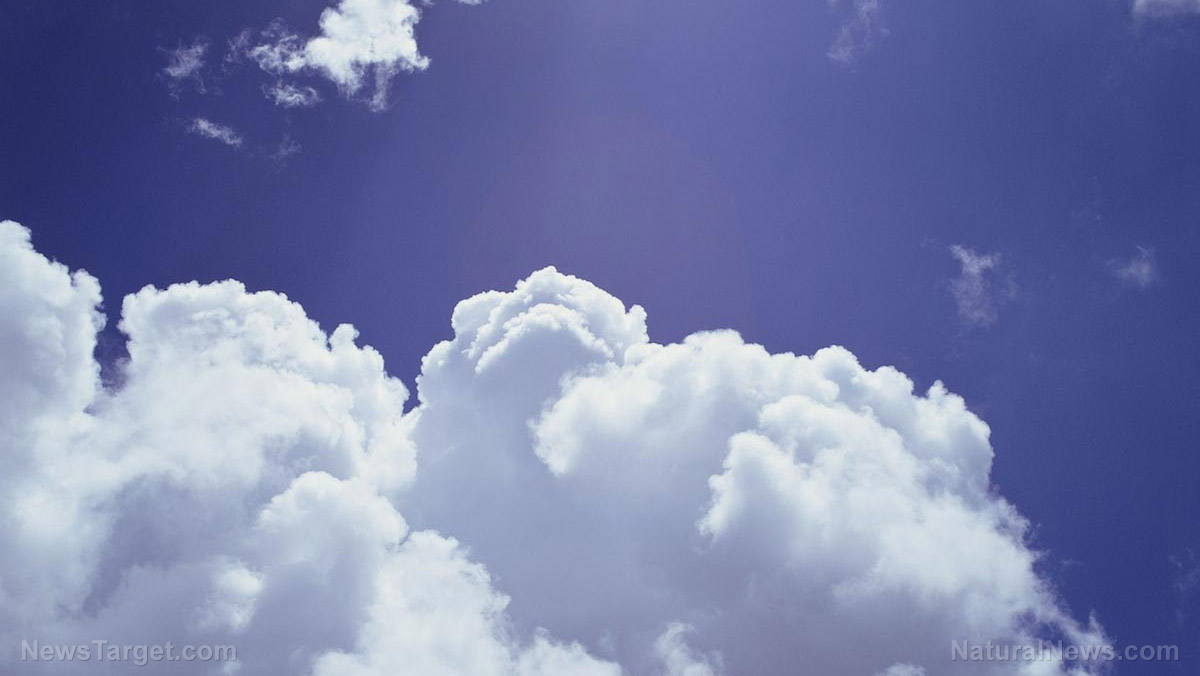What grows where? A medicinal plant map for your survival kit
11/15/2018 // Jhoanna Robinson // Views
Tags: botanicals, bug out, emergency medicine, green living, herbal medicine, medicinal plant map, medicinal plants, natural cures, off grid, plant cures, preparedness, prepper, prepping, survival kit, survival medicine

We present to you a medicinal plant map. The plants on this map depict one or two important species that are cultivated in certain states. The map was printed in 1932 by the National Wholesale Druggists' Association used by pharmacists during a promotional campaign called Pharmacy Week. (h/t to BioPrepper.com)
The medicinal plants that are famous in certain states appear as follows:
- Washington: Digitalis purpurea (foxglove or lady's glove) – Digitalis is often recommended for patients who are given a diagnosis of congestive heart failure.
- Washington: Hydrastis Canadensis (goldenseal, orangeroot, or yellow puccoon) – Goldenseal is considered an important cure of catarrhal gastritis and gastric ulceration. It has a cooling effect, so it should not be used to remedy an infection that is in its early stage or if the patient is experiencing more chills than fever. It should not be used by pregnant women.
- Montana: Dryopteris Filix-mas (male fern) – Male fern is a proper cure for intestinal tapeworm infections. It can also be used to treat the deadly cysticercosis, which is a parasitic infection that is induced by the larval form of the pork tapeworm, and which infects the brain, spine, and the eye.
- Montana: Hyoscyamus Niger (henbane or stinking nightshade) – It alleviates muscle spasm and pain and can induce a calming effect to the body. It is beneficial to the digestive tract as it can treat spasms of the body system.
- Texas: Pumica granatum (pomegranate) – The bark and root of the tree contain active compounds that, when mixed into a decoction, will kill intestinal parasites. It is a good treatment for dysentery and tuberculosis.
- Texas: Gossypium barbadense (sea island cotton) – Sea island cotton's leaves and seeds have been used medicinally since the time of slavery as an abortifacient and emmenagogue. Its seeds can also be consumed as a form of birth control.
- North Dakota: Linium usitatissimum (common flax or linseed) – Linseed has been used as a tea or as a compress for the treatment of the diseases of the respiratory tract and the eyes, infections, fever, cold, or flu.
- North Dakota: Dioscorea villosa (wild yam) – Wild yams treat female reproductive issues such as pre-menstrual syndrome, menstrual cramps, and vaginal dryness in older women. It can also boost energy and libido in men and women, and even help in breast enlargement.
- Minnesota: Cypripedium pubescens (large yellow lady slipper) – Lady slipper is a good nerve stimulant. It helps boost mood and induces a calm and cheerful state of mind, helping one to obtain a relaxing sleep.
- Minnesota: Aracelia racemosa (American spikenard, life-of-man, petty morel) – It is considered an antiseptic, a depurative, and a diaphoretic, which makes it effective in treating rheumatism, coughs, gout, and lung problems.
- Wisconsin: Polygala senela (Seneca snakeroot, senegaroot, or rattlesnake root) – The plant is a common herbal medicine of the Native Americans, and was used to treat bleeding wounds, toothaches, and common colds. In modern times, it is now added to teas, lozenges, gargles, and cough syrups.
- Michigan: Mentha spicata (spearmint, garden mint) – Spearmint is good for treating digestive issues. It helps regulate heart rate and blood pressure.
- Michigan: Mentha piperita (peppermint) – This is useful for colds.
For more news stories on treatments and alternative sources of medication, visit Healing.news.
Sources include:
Related Topics
botanicals bug out emergency medicine green living herbal medicine medicinal plant map medicinal plants natural cures off grid plant cures preparedness prepper prepping survival kit survival medicineLatest News
Related News
08/22/2023 / By Olivia Cook
07/27/2023 / By Olivia Cook
07/12/2023 / By Zoey Sky
07/12/2023 / By Zoey Sky
06/27/2023 / By Olivia Cook
Take Action:
Support Natural News by linking to this article from your website.
Permalink to this article:
Copy
Embed article link:
Copy
Reprinting this article:
Non-commercial use is permitted with credit to NaturalNews.com (including a clickable link).
Please contact us for more information.
Please contact us for more information.























